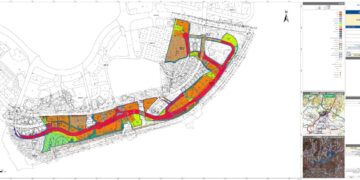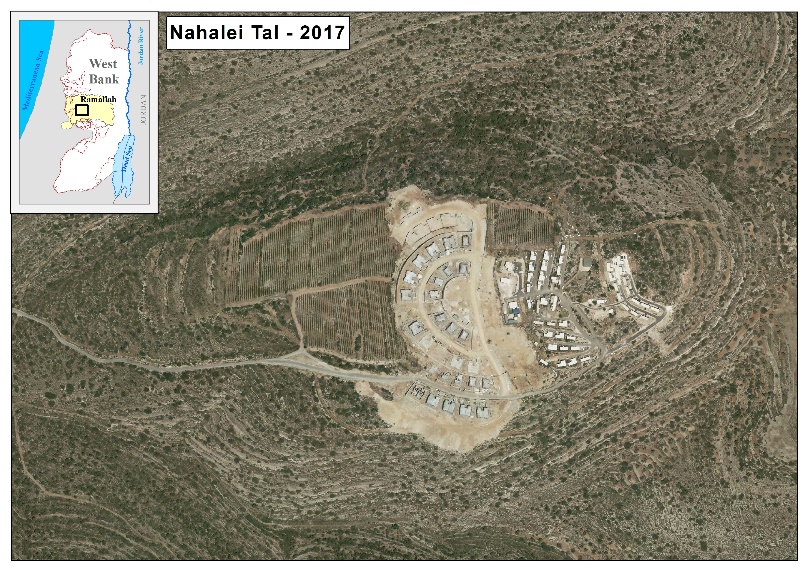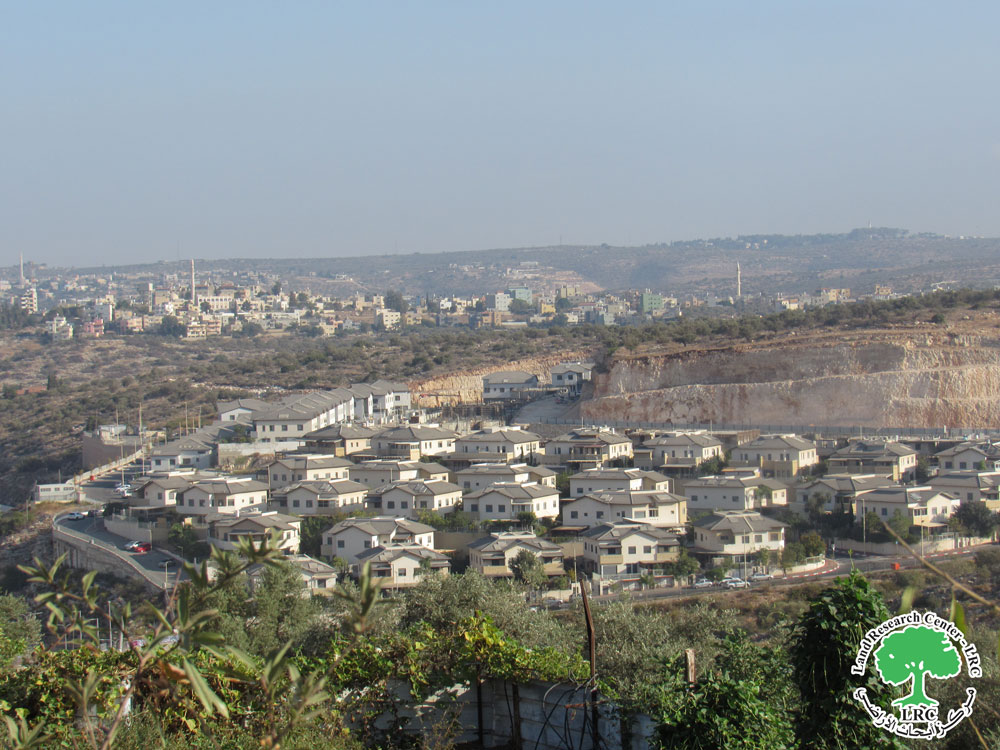- Violation: a detailed plan targeting 88 dunums in favor of the Israeli settlements.
- Location: Salfit Governorate.
- Violation date: January 2022 AD.
- The perpetrator: the so-called settlement sub-committee.
- Affected party: a number of farmers in the area.
The violation details:
The Israeli occupation continues to loot the lands of the city of Salfit and villages and towns in the governorate, in order to expand the area of the existing settlements, and to impose a fait accompli that contributes to the Judaization of more of the governorate’s lands and completely changing its topography.
In order to achieve this goal, the so-called “director of Settlement Sub-Committee” of the Supreme Council for Planning and Construction, Natalia Averbukh, approved in early January 2022 the deposit of a new detailed organizational plan bearing the number 5/3/130, which is considered a change to the structural plan issued at the time of the Israeli Mandate No. (S-15) and also for the previous detailed Israeli plans, which bear the numbers: 965,966.
 Pictures 1+2: Text of the announcement of the scheme deposit No. 5/3/130
Pictures 1+2: Text of the announcement of the scheme deposit No. 5/3/130
This plan specifically targets the following basins; Part of the Basin No. (3) the site of Wadi Al-Matwi, and part of the Basin No. (4) the northern part of the lands of the city of Salfit, and it will annex an area of 88 dunums of the citizens’ lands that were confiscated earlier for colonial purposes.
It is noteworthy that the Israeli occupation has declared that the main purpose of this declaration is to change the use of the land from agricultural to construction purposes, including the building of roads. The proposed road is designed to have a new road with lanes to connect the West Ariel neighborhood, which is basically an extension of that settlement built on the lands of the governorate. By so doing, the occupation aims to change the features of the entire region by changing the character of the land use, and according to the declaration, the occupation will seek to establish a new road network, as well as a developed infrastructure and public service buildings to serve this colonial neighborhood.
Mr. Abdul Karim Al-Fatash, Mayor of Salfit, told the LRC’s field researcher the following:
“There is a real danger as a result of this scheme, which will swallow up the lands and change the character of the region as a whole, as it will split the lands of the city of Salfit in ton two parts and eliminate the opportunity for future Palestinian urban expansion in the northern direction, in addition to seizing agricultural lands and pastures which are considered one of the main sources of income for a large number of families in the area. The plan to establish this neighborhood in the “Al-Ras” area, north of Salfit, is the culmination of this great expansionist colonial project because all the surrounding Palestinian lands will be part of this large planned neighborhood”.
 Pictures 3-4: the colonial neighborhood in the Al Ras area, north of Salfit, and the target
Pictures 3-4: the colonial neighborhood in the Al Ras area, north of Salfit, and the target
The settlement of “Ariel” in terms of location, area and population:
The settlement of “Ariel” is one of the largest settlements on the lands of Salfit Governorate, where the occupation calls it the capital of Samaria, as its establishment dates back to 1978 on the eve of the signing of the Camp David Accord between Egypt and Israel. The colony started on an area of 500 dunums of the lands of Marda village and the city of Salfit to expand with the passage of time to confiscate by now about 13,775 dunums, including 2479 dunums as built-up area taken from the lands of the villages of Marda, Kifl Haris, Iskaka and the city of Salfit. It was later transformed into a city that includes a scientific college (College of Judea and Samaria), various factories, large housing, and hotels. Its population, according to 2005 statistics, was about 16,520 settlers (Source: Middle East Peace Foundation – Washington). The borders of the municipality of Ariel are four times the building area, which makes it possible for future expansion to accommodate more settlers. In addition to what was mentioned, the colony of “Ariel” is considered the third in terms of area and population in the West Bank and Jerusalem.
The continuation of the occupying power in expanding Israeli settlements and establishing new outposts at the expense of the occupied lands in the West Bank, including Jerusalem; It is considered a violation of the rights and property of the Palestinian people and of international humanitarian law, and a violation of all international laws and norms, which prevent infringement of civil and public rights and property in the occupied territories.
United Nations General Assembly resolutions on Israeli settlement
1- United Nations General Assembly resolution of 20/1/1972, in which it demanded that Israel is asked to stop a number of measures and practices, including (building Israeli settlements in the occupied Arab territories and transferring some of the civilian population from Israel to the occupied Arab territories).
2- United Nations General Assembly resolution of 15/12/1972, in which the General Assembly requested Israel to stop annexing any part of the occupied Arab territories, establishing settlements in those lands, and transferring the population to them.
3- United Nations General Assembly of 7/12/1973, in which the General Assembly expressed its grave concern over Israel’s violation of the provisions of the Fourth Geneva Convention of 1949 and all measures taken by Israel to change the features of the occupied territories or their demographic composition, and considered them a grave violation of international law.
4- United Nations General Assembly Resolution of 29/11/1974 in which the General Assembly expressed its deepest concern over the annexation by Israel of some parts of the occupied territories, the establishment of settlements and the transfer of residents to them.
5- United Nations General Assembly resolution of 15/12/1975, consisting of four sections, and in the first section it condemned all the measures that Israel practices in the occupied territories, describing these practices as serious violations of the United Nations Charter and an obstacle to the establishment of a lasting and just peace in the region, stressing that these procedures are null and void, and have no basis of legitimacy.
6- General Assembly Resolution of 28/10/1977, which affirmed in its first clause that all measures and actions taken by Israel in the Palestinian territories and other Arab territories occupied in 1967 are legally untrue, and are a serious obstruction to the endeavors to reach a just and permanent peace in the Middle East. The General Assembly also deeply regrets that Israel continues to implement these measures, in particular the establishment of settlements in the occupied Arab territories.
Prepared by
The Land Research Center
LRC

















